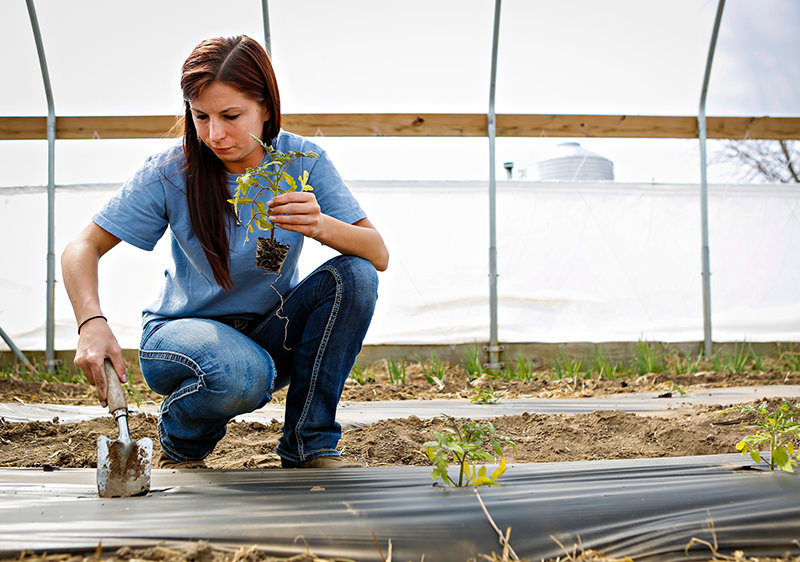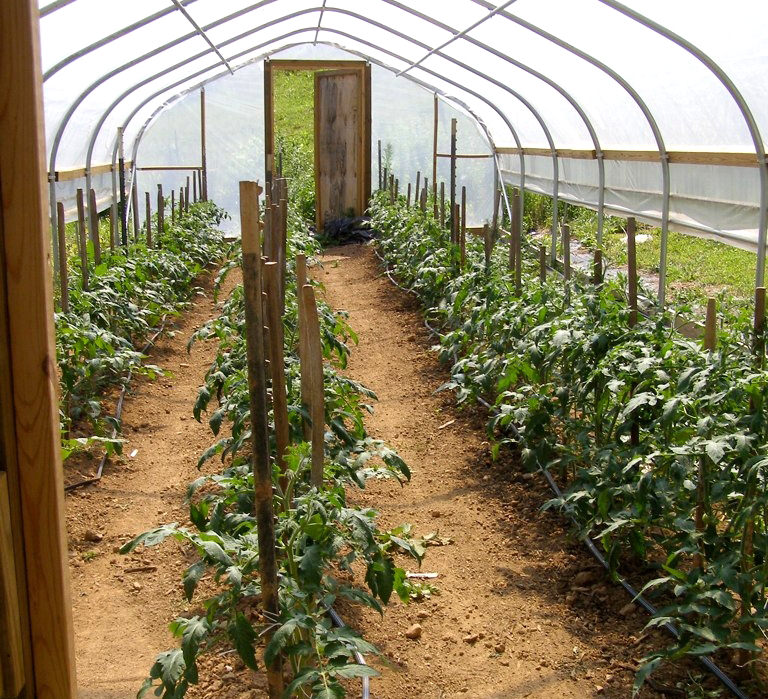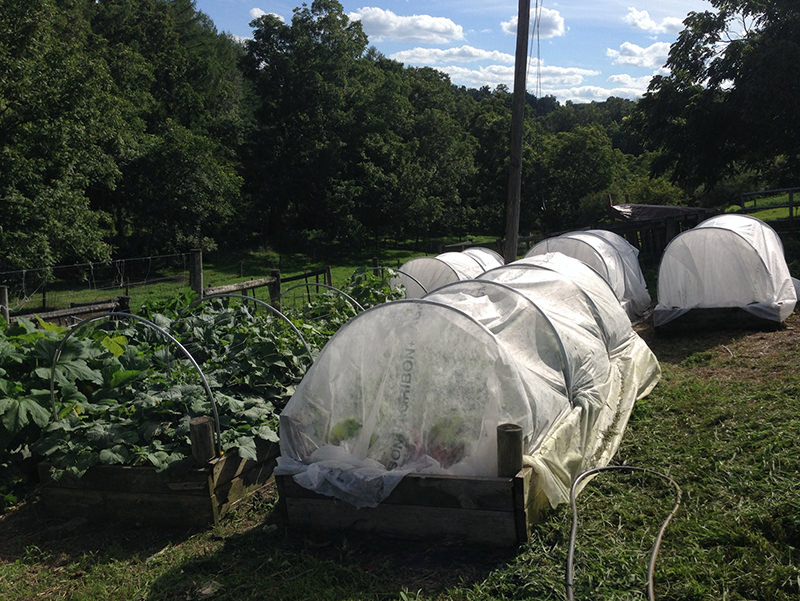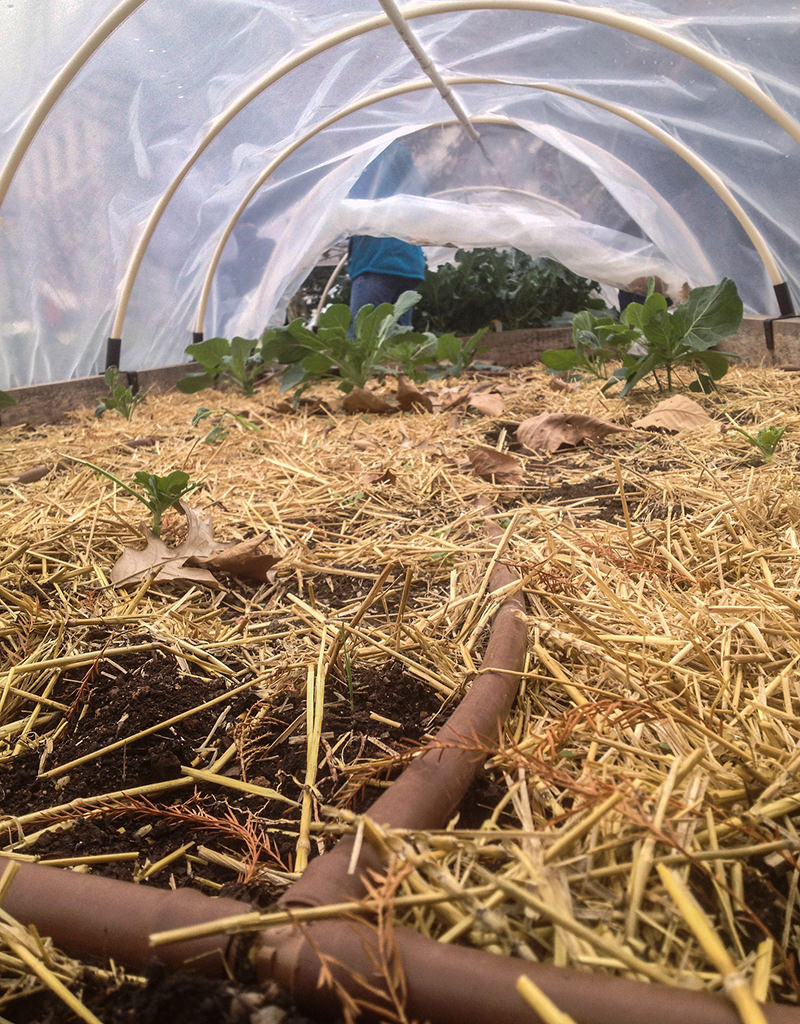
Tomatoes are one of the top-three consumed vegetables in the U.S. It’s no wonder they’re a favorite of farmers and gardeners, too. This heat-loving crop can be grown year-round in many parts of the country if you treat them right in season-extending structures, like greenhouses, hoop houses and high tunnels. By pampering these fickle plants with indoor growing spaces, you have to be careful to treat them properly. Tomatoes are susceptible to mineral deficiencies, fungal and bacterial diseases, insect pests, and problems related to watering.
If you’re wondering why your greenhouse tomatoes aren’t up to par with the tomatoes you grow in the garden, you might be making one of these four common mistakes.
1. You Planted The Wrong Varieties

CAFNR/Flickr
Who doesn’t love a fat, funny-looking heirloom tomato? A farmer’s desire for the first Brandywine tomato of the year may lead him to plant a row of Rose in the high tunnel, but many heirloom tomatoes don’t do very well in an enclosed environment, leading to plant-health issues.
“Varieties bred for the greenhouse environment need to be used, rather than field- or garden-type tomatoes,” according to Rick Snyder, PhD, of Mississippi State University Extension Service. “All varieties are indeterminate so that they can produce over a long harvest season.”
Instead, Try: Snyder says the most widely used variety in the U.S. is the Dutch hybrid Beefsteak-type tomato Trust. If you’re after heirloom-like tomato varieties for the greenhouse, Johnny’s Selected Seeds suggests the hybrids Marnero (similar to Cherokee Purple) and Margold (imitates Striped Germans).
2. You Planted Tomatoes Too Close Together

mystuart (on and off)/Flickr
Because tomato plants are subject to foliar diseases like Botrytis blight (aka gray mold), early blight and leaf spot, they require air movement. You might notice fuzzy mold patches forming on living and dead plant tissue, yellowing leaves, girdled stems and dying plants. Greenhouses and high tunnels need to have good ventilation because as humidity builds up, so does the opportunity for these issues to take hold.
Instead, Try: According to Snyder’s “Greenhouse Tomato Handbook,” greenhouse tomatoes need at least 4 square feet per plant. Planting double rows with plants 4 or 5 feet apart (from center to center) is an efficient use of coveted indoor growing space.
This formula determines how many tomato plants you should be growing in your greenhouse:
Multiply the length of the greenhouse in feet by the width.
Divide by 4 (to space every 4 square feet) or 5 (to space every 5 square feet).
The answer is the number of plants you should put in this structure.
Planting at 4 square feet or 5 square feet should give about the same yield overall, as putting them closer together will shade some of the plants (you’ll see plants getting very long and tall) and invite diseases. Having more plants, though, means more labor for planting and trimming.
Keep plants suckered; trim any foliage below branches that are bearing fruit; and trim yellowing, dead or diseased plant tissue and fruit to improve air circulation and reduce crowding. Discard these materials outside of the greenhouse to prevent them from causing further problems to the plants that are still growing and producing.
3. You Aren’t Practicing Crop Rotation

USDA/Flickr
Putting plants in a greenhouse doesn’t get you off the hook of having to rotate families of crops. If anything, the closed-in space makes rotation that much more important. After growing tomatoes year after year in the same space, you might notice uneven ripening due to low soil nutrients, increased pest pressure, recurring diseases, a fungus you just can’t kick or overall lack of productivity in your tomato crop.
Instead, Try: If you have more than one greenhouse, high tunnel or hoop house, grow your nightshade plants (tomatoes, peppers, eggplant, et cetera) in a different one each year. If you have only one season-extending space to work with, pay close attention to adding the right soil amendments (get a soil test each year), maintain proper pH, be vigilant about staying on top of pests and diseases throughout the season, and solarize the structure in the off-season to kill diseases and pests that could be hanging out in the soil.
Snyder cautions against growing different crops in the same greenhouse at the same time, as each has its own growth requirements that you might not be able to manage under one roof.
“You could, however, grow a main crop, like tomatoes, and have a ‘few’ of something else, just to try out,” he suggests. “But, in that case, the system should be optimized for the main crop.”
4. You’re Not Watering Consistently

USDA/Flickr
It’s exciting to watch tomatoes get really big while ripening on the vine, and it’s disappointing to harvest them and find the bottom has cracked or has turned black from blossom-end rot. Likewise, it’s frustrating to see your tomato plants wilting in the greenhouse—looking dull and feeling rubbery—or to find rows of beautiful tomato flowers but no fruits forming. Snyder finds these symptoms may be the fault of inconsistent watering.
Instead, Try: Snyder says full-sized tomato plants require 2 to 3 quarts of water each per day when it’s sunny, and this water needs to be delivered at regular intervals.
“Many growers water as often as once every 30 or 60 minutes in hot climates,” he points out.
Unlike growing tomatoes in the field, where Mother Nature is in charge, you have complete control over irrigation in the greenhouse, whether you turn on and off a drip-irrigation system yourself or you have one set on a timer. (Don’t use overhead irrigation for tomatoes, as the leaves are sensitive to disease caused by contact with water or with soil that’s splashed onto them as a result of watering.)
These four issues are just the start to mistakes commonly made when growing tomatoes in a greenhouse, hoop house or high tunnel. You can really brush up on your greenhouse-tomato game with help from your local cooperative extension office or at Snyder’s annual Mississippi State University Cooperative Extension Greenhouse Tomato Short Course, which takes place each year in March for tomato growers from across the country.




